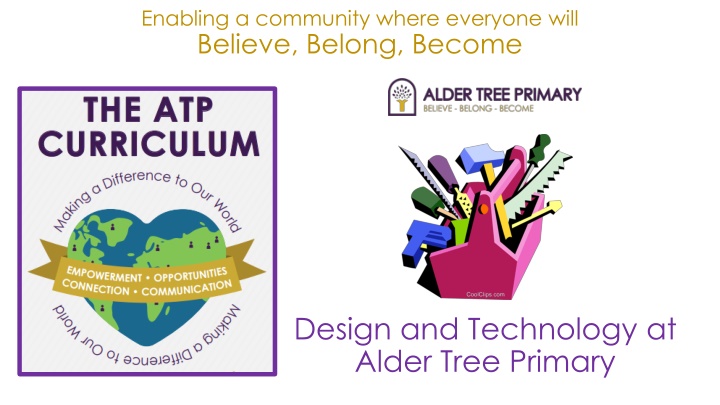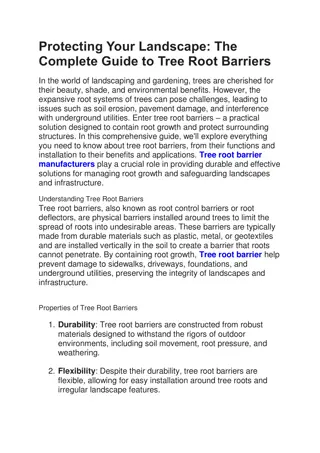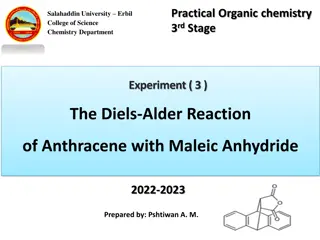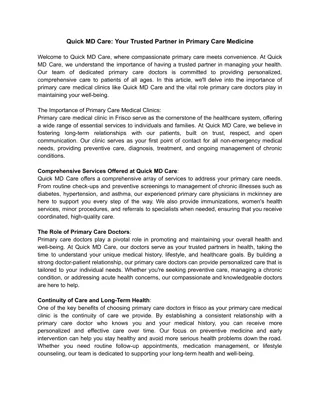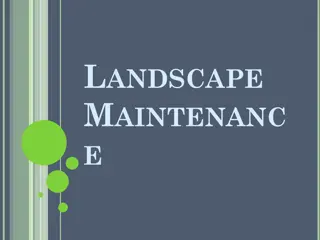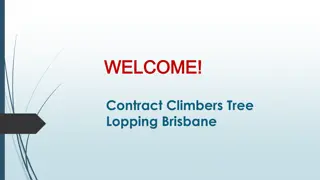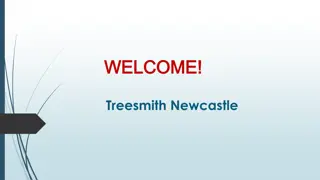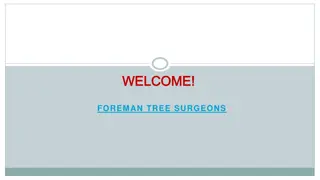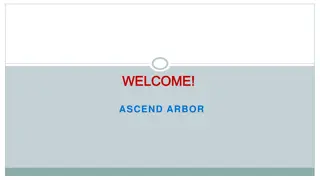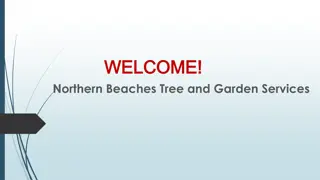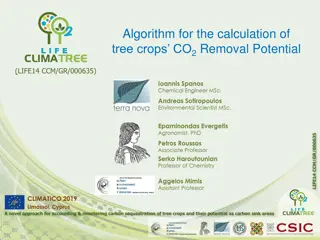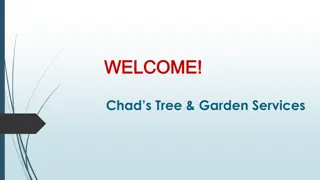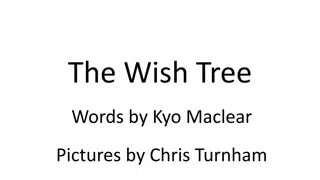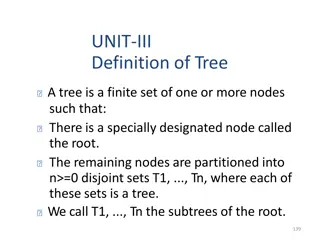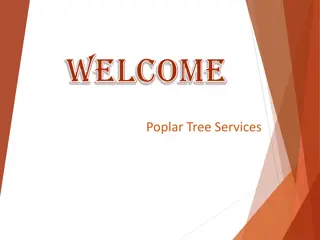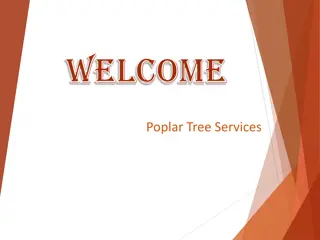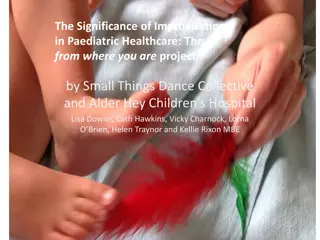Enabling a Creative Community at Alder Tree Primary
Design and Technology at Alder Tree Primary aims to nurture creativity, innovation, and problem-solving skills in students. Through hands-on projects, students explore real-world challenges, collaborate on solutions, and develop a critical understanding of the impact of design and technology on daily life. This comprehensive curriculum empowers children to believe in their potential, belong to a community of makers, and become resourceful, innovative citizens ready to thrive in a technological world.
Download Presentation

Please find below an Image/Link to download the presentation.
The content on the website is provided AS IS for your information and personal use only. It may not be sold, licensed, or shared on other websites without obtaining consent from the author.If you encounter any issues during the download, it is possible that the publisher has removed the file from their server.
You are allowed to download the files provided on this website for personal or commercial use, subject to the condition that they are used lawfully. All files are the property of their respective owners.
The content on the website is provided AS IS for your information and personal use only. It may not be sold, licensed, or shared on other websites without obtaining consent from the author.
E N D
Presentation Transcript
Enabling a community where everyone will Believe, Belong, Become Design and Technology at Alder Tree Primary
Enabling a community where everyone will Believe, Belong, Become DESIGN AND TECHNOLOGY PURPOSE OF STUDY Design and technology is an inspiring, rigorous and practical subject. Using creativity and imagination, pupils design and make products that solve real and relevant problems within a variety of contexts, considering their own and others needs, wants and values. They acquire a broad range of subject knowledge and draw on disciplines such as mathematics, science, engineering, computing and art. Pupils learn how to take risks, becoming resourceful, innovative, enterprising and capable citizens. Through the evaluation of past and present design and technology, they develop a critical understanding of its impact on daily life and the wider world. High-quality design and technology education makes an essential contribution to the creativity, culture, wealth and well-being of the nation. Believe Belong Become Through D&T, children will develop a sense of belief that they can achieve anything they want to. They will experiment with their design, creativity and evaluation skills to achieve a product from their imagination. D&T can support children to develop the creative, technical and practical expertise needed to perform everyday tasks confidently and to participate and belong successfully in an increasingly technological community. Children will build and apply a repertoire of knowledge, understanding and skills in order to design and make high quality prototypes and products for a wide range of users
Enabling a community where everyone will Believe, Belong, Become CHARACTERISTICS OF A DESIGNER *An impressive knowledge and understanding of other craftmakers and designers *The ability to think and act like creative practitioners by using their knowledge and understanding to inform, inspire and interpret ideas, observations and feelings. *Independence, initiative and originality which they can use to develop their creativity. *The ability to select and use materials, processes and techniques skillfully and inventively to realise intentions and capitalise on the unexpected. *The ability to reflect on, analyse and critically evaluate their own work and that of others. *A passion for and a commitment to the subject. AIMSThe national curriculum for history aims to ensure that all pupils: The national curriculum for design and technology aims to ensure that all pupils: develop the creative, technical and practical expertise needed to perform everyday tasks confidently and to participate successfully in an increasingly technological world build and apply a repertoire of knowledge, understanding and skills in order to design and make high-quality prototypes and products for a wide range of users critique, evaluate and test their ideas and products and the work of others understand and apply the principles of nutrition and learn how to cook
Enabling a community where everyone will Believe, Belong, Become Connections Opportunities Communication Empowerment Children will make connections between prototypes, designs and previously learnt skills to inform their future work. Children will be provided with opportunities to experience first-hand, multi-sensory experiences where possible and immerse themselves in topics. Children will be able to communicate their research, creations and finished products. Children will be given freedom to research areas of their own interest and take control of their own learning. They will have ownership over what is taught in the topic. Architect Chef Town Planner Fashion Designer ASPIRATIONS FOR THE FUTURE Here are some of the jobs you could aspire to do in the future as a Designer
Enabling a community where everyone will Believe, Belong, Become Curriculum Delivery The ingredients of a sequence of lessons
Enabling a community where everyone will Believe, Belong, Become Curriculum Coverage KS1 Topic Title NC Coverage Year 3D Design Build a castle Year 1 Once upon a time Textiles - Sewing/threading Year 1 Our super city Hessian easter egg bag Year 1 My Rainbow plate Food Vegetable preparation and tasting Year 2 What a wonderful road Textiles -Design an explorer badge Year 2 Fire! Food Baking bread Year 2 Birds of a feather, flock together 3D Design Carnival float
Enabling a community where everyone will Believe, Belong, Become Curriculum Coverage LKS2 Topic Title NC Coverage Year Year 2 Birds of a feather, flock together Textiles -Design and make a mask Year 3 Walking with dinosaurs Food bake a cake Year 3 Ancient Greece 3D Design Greek Lyre Year 3 Protect the planet Textiles Repurpose a piece of clothing Year 4 The Romans Food - Making a pasta dish Year 4 Vikings 3D Design Dragon Toy
Enabling a community where everyone will Believe, Belong, Become Curriculum Coverage UKS2 Year Topic Title NC Coverage Year 4 Wonders of the wharfe Textiles - Make a bag for residential Year 5 Life Changers 3D design - Design and build a boat Year 5 Heritage Hunters Food - Carnival food adapt a recipe Year 5 History Makers Textiles- Design and make a 3d model (Willow Pattern Story) Year 6 Adventure Awaits 3D Design Moving Bridges Year 6 WWII Textiles Make a cushion Year 6 WWII Food design and prepare a meal from a ration book
Enabling a community where everyone will Believe, Belong, Become Design Technology Road Map Year 1 Year 2 Year 3 Year 4 Year 5 Year 6
Enabling a community where everyone will Believe, Belong, Become Early Years Expressive Arts & Design Nursery Explore different materials freely, to develop their ideas about how to use them and what to make. Develop their own ideas and then decide which materials to use to express them. Join different materials and explore different textures Reception Return to and build on their previous learning, refining ideas and developing their ability to represent them. Create collaboratively, sharing ideas, resources and skills Early Learning Goal: Creating with Materials - Safely use and explore a variety of materials, tools and techniques, experimenting with colour, design, texture, form and function; - Share their creations, explaining the process they have used; - Make use of props and materials when role playing characters in narratives and stories.
Enabling a community where everyone will Believe, Belong, Become The DT Curriculum in Early Years at ATP Whole Class Teaching Continuous Provision Children have continuous access to art & DT areas that promote development in expressive arts and design. Children have the opportunity to use a range of tools including those for woodwork. Projects N Pebble People In EYFS children have weekly Forest School sessions and learn how to safely use a rage of tools and design and create using natural materials. R Puppet Show R Christmas Cards R Baking Bread R Design a Cape R Super Smoothies
Enabling a community where everyone will Believe, Belong, Become DT Curriculum Year 1 3D Design Textiles - Sewing/threading Cooking and Nutrition Build a castle Easter egg bag Vegetable preparation and tasting What do I want the children to be able to do by the end of Year 1? Generating Ideas Think of own ideas for design Use pictures and words to plan Design a product for myself, following design criteria Think of own ideas for design. Use pictures and words to plan. Design a product for myself, following design criteria. Work in a range of contexts (imaginary, home, school, wider community, story based) Think of own ideas for design. Use pictures and words to plan. Design a product for myself, following design criteria. Work in a range of contexts (imaginary, home, school, wider community, story based) Know how to Making Select appropriate tools and equipment for the purpose. To build following instructions. Select appropriate tools and equipment for the purpose. To build following instructions. Select appropriate tools and equipment for the purpose. To cook / bake following instructions. Know how to Evaluation Explain what is being made and why. Talk about pre-existing products, saying what is good or bad about them. Say whether their product does what it is meant to (fits the design brief) and how it could be improved. Explain what is being made and why. Talk about own and pre-existing products, saying what is good or bad about them. Say whether their product does what it is meant to (fits the design brief) and how it could be improved. Explain what is being made and why. Say whether their product fits the design brief and how it could be improved. Know how to
Enabling a community where everyone will Believe, Belong, Become DT Curriculum Year 1 continued TECHNICAL KNOWLEDGE Paper Fold, tear and cut paper and card. Roll paper to create tubes. Cut along lines, straight and curved. Use a hole punch. Insert paper fasteners for card linkages. Create hinges. Use simple pop ups. Sewing and Textiles Colour fabrics using a range of techniques e.g., fabric paints, printing, and painting. Join fabrics with glue and stitch. Decorate fabrics with buttons, beads, sequins, braids and ribbons. 3D Design To make a structure. To describe the materials within a structure. To measure out and mark out materials. To finish off work so it looks neat and tidy. To screw in several screws already started using a screwdriver Bolts and nuts through wood. To saw under supervision. Cooking and Nutrition Measuring Cut and peel a range of ingredients. Work safely and hygienically Understand the need for a variety of foods in the diet
Enabling a community where everyone will Believe, Belong, Become DT Curriculum Year 2 3D Design Textiles - Sewing/threading Food Carnival float Design a carnival mask Bake bread What do I want the children to be able to do by the end of Year 2? Generating Ideas Think of own ideas and plan what to do next. Describe designs using pictures, diagrams, models, mock-ups, words, and ICT. Work confidently in a range of contexts (imaginary, home, school, wider community, story-based etc). Describe designs using pictures, diagrams, models, mock-ups, words, and ICT. Design a product for myself and others, following design criteria. Know how to Making Use a range of tools and equipment accurately. Choose appropriate tools and equipment, describing and explaining why they are being used. Choose appropriate tools and equipment, describing and explaining why they are being used. Know how to Evaluation Explain what is being made and why the audience will like it. Suggest what went well and what would be done differently when evaluating their own product. Explain what is being made and why the audience will like it. Suggest what went well and what would be done differently when evaluating their own product. Explain what is being made and why the audience will like it. Suggest what went well and what would be done differently when evaluating their own product. Know how to
Enabling a community where everyone will Believe, Belong, Become DT Curriculum Year 2 continued TECHNICAL KNOWLEDGE Paper Investigate strengthening sheet materials. Investigate joining temporary, fixed and moving materials. Sewing and Textiles Cut out shapes which have been created by drawing around a template onto the fabric. To sew in a running stitch. To make sure work is neat and tidy. 3D Design To make a structure with moving components Use a range of materials to create models with wheels and axels e.g.. glue, tape, dowel and cotton reels. Attach wheels to a chassis using an axle. Join appropriately for different materials and situations e.g. glue and tape. Mark out materials to be cut using a template. Food Follow a simple recipe Beating and folding with a wooden spoon Cutting using a small knife Measure and weigh food items - non- statutory measures e.g., spoons, cups Name and sort foods into the five group in the Eatwell plate and understand five a day Identify where the ingredients come from.
Enabling a community where everyone will Believe, Belong, Become DT Curriculum Year 3 3D Design Textiles - Sewing/threading Food Greek Lyre Repurpose a piece of clothing Bake a cake What do I want the children to be able to do by the end of Year 3? Generating Ideas Create a design that meets a range of requirements. Consider the equipment and tools needed when planning. Describe a design using an accurately labelled diagram, and in words. Create a design that meets a range of requirements. Consider the equipment and tools needed when planning. Describe a design using an accurately labelled diagram, and in words. Consider the equipment and tools needed when planning. Know how to Making Measure, mark out, assemble and join materials and components with some accuracy. Choose appropriate tools and equipment, describing and explaining why they are being used. Choose appropriate tools and equipment, describing and explaining why they are being used. Choose appropriate tools and equipment, describing and explaining why they are being used. Know how to Evaluation Evaluate own and pre-existing products. Suggest what could be changed to improve a design, beginning to link this to the design brief. Evaluate own and pre-existing products. Suggest what could be changed to improve a design, beginning to link this to the design brief. Evaluate own and pre-existing products. Suggest what could be changed to improve a design, beginning to link this to the design brief. Know how to
Enabling a community where everyone will Believe, Belong, Become DT Curriculum Year 3 continued TECHNICAL KNOWLEDGE Paper Cut slots. Cut internal shapes. Use lolly sticks/card to make levers and linkages. Sewing and Textiles Join fabrics using running stitch, over sewing and back stitch. Measure mark out and cut fabric. Create a simple pattern. Use appropriate decoration techniques (glue). 3D Design To join materials using permanent and temporary fixings. To add mechanical elements to my structures to make movement. To combine a number of components in my product. To use a selection of tools including a saw, vice, hammer and screwdriver Food Following a simple recipe Join and combine a range of ingredients. use a range of techniques such as mixing, spreading, kneading and baking Work safely and hygienically. Measure and weigh ingredients appropriately. Develop sensory vocabulary/knowledge using taste, smell, texture and touch.
Enabling a community where everyone will Believe, Belong, Become DT Curriculum Year 4 3D Design Textiles - Sewing/threading Food Dragon Toy Bag for residential Pasta Dish What do I want the children to be able to do by the end of Year 4? Generating Ideas Produce a detailed plan with labelled diagrams, a written explanation and step-by- step guide. Suggest improvements to develop and refine a planned idea. Generate more than one idea for how to create a product. Gather information to help design a successful product (i.e. by asking others' views). Produce a detailed plan with labelled diagrams, a written explanation and step-by- step guide. Suggest improvements to develop and refine a planned idea. Select suitable equipment, explain choices in relation to required techniques and use accurately Explain choices of materials Measure, mark out, cut and shape materials/components with some accuracy Assemble, join and combine materials and components with some accuracy Apply a range of finishing techniques with some accuracy Evaluate the appearance and usability of own and pre-existing products. Explain how the original design could be improved, considering the appearance and usability and linking this to the design brief. Generate more than one idea for how to create a product. Gather information to help design a successful product (i.e. by asking others' views). Produce a detailed plan with labelled diagrams, a written explanation and step-by- step guide. Suggest improvements to develop and refine a planned idea. Know how to Making Select suitable tools and equipment, explain choices in relation to required techniques and use accurately Explain choices of materials Measure, mark out, cut and shape materials/components with some accuracy Assemble, join and combine materials and components with some accuracy Apply a range of finishing techniques with some accuracy Evaluate the appearance and usability of own and pre-existing products. Explain how the original design could be improved, considering the appearance and usability and linking this to the design brief. Select suitable tools and equipment, explain choices in relation to required techniques and use accurately Know how to Evaluation Evaluate the appearance and usability of own and pre-existing products. Explain how the original design could be improved, considering the appearance and usability and linking this to the design brief. Know how to
Enabling a community where everyone will Believe, Belong, Become DT Curriculum Year 4 continued TECHNICAL KNOWLEDGE Paper Use linkages to make movement larger or more varied. Use and explore complex pop ups. * Create nets. Sewing and Textiles Select appropriate textiles for a product. To applique fabrics using basic sewing skills. To improve designs as you work Understand seam allowance. Explore fastenings and recreate some e.g. sew on buttons and make loops. 3D Design Create a shell or frame structure; strengthen frames with diagonal struts. Incorporate a circuit with a bulb or buzzer into a model. Prototype frame and shell structures. Measure and mark square selection, strip and dowel accordingly to 1cm. Use a glue gun with close one to one supervision. Food Follow a simple recipe Prepare and cook a savoury dishes safely and hygienically Using heat on a hob and microwave Use a range of techniques such as peeling, chopping, slicing, grating, mixing Accurately use all appropriate vocabulary. Make healthy eating choices from an understanding of a balanced diet. Analyse the taste, texture, smell and appearance of a range of food.
Enabling a community where everyone will Believe, Belong, Become DT Curriculum Year 5 3D Design Textiles - Sewing/threading Food Life Boat (with motor) Puppet Caribbean Street Food What do I want the children to be able to do by the end of Year 5? Generating Ideas Generate a range of ideas after collating relevant information (i.e. users views). Produce a detailed plan, with step-by-step instructions, cross sectional diagrams and prototypes. Suggest alternative plans, considering the positive aspects and drawbacks of each. Use a range of tools expertly. Consider the aesthetic qualities and functionality of my work when making. Mainly accurately apply a range of finishing techniques Use techniques that involve a small number of steps begin to be resourceful with practical problems Evaluate the appearance and function of a product (own and pre-existing) against the original criteria, saying whether it is fit for purpose. Suggest improvements that could be made, considering materials and methods that have been used. Generate a range of ideas after collating relevant information (i.e. users views). Produce a detailed plan, with step-by-step instructions, cross sectional diagrams and prototypes. Generate a range of ideas after collating relevant information (i.e. users views). Suggest alternative plans, considering the positive aspects and drawbacks of each. Know how to Making Consider the aesthetic qualities and functionality of my work when making. Mainly accurately apply a range of finishing techniques Use techniques that involve a small number of steps begin to be resourceful with practical problems Use a range of tools expertly. Consider the aesthetic qualities and functionality of my work when making. Know how to Evaluation Evaluate the appearance and function of a product (own and pre-existing) against the original criteria, saying whether it is fit for purpose. Suggest improvements that could be made, considering materials and methods that have been used. Evaluate the appearance and function of a product (own and pre-existing) against the original criteria, saying whether it is fit for purpose. Suggest improvements that could be made, considering materials and methods that have been used. Know how to
Enabling a community where everyone will Believe, Belong, Become DT Curriculum Year 5 continued TECHNICAL KNOWLEDGE Paper Cut accurately and safely to a marked line. Join and combine materials with temporary, fixed or moving joints. Use a craft knife, cutting mat and safety ruler with one to one supervision if appropriate. Choose an appropriate sheet material for a purpose. Sewing and Textiles Create 3D products using pattern pieces and seam allowance. Choose appropriate stich for joining fabrics - running stitch, over sewing, back stitch and blanket stitch. Pin and tack fabric pieces together. Combine fabrics to create more useful properties 3D Design Incorporate mechanical elements to my structures for movement. Prototype frame and shell structures. Create a shell or frame structure; strengthen frames with diagonal struts. To join materials using permanent and temporary fixings. Use bradawl to mark hole positions.
Enabling a community where everyone will Believe, Belong, Become DT Curriculum Year 5 continued TECHNICAL KNOWLEDGE Food Adapt a simple recipe with several elements Understand that recipes can be adapted to change the appearance, taste, texture and aroma Select and prepare foods for a purpose Year 5/6 Technical Knowledge Choose appropriate techniques for food preparation eg. Slice, grate, mix, spread, knead and bake. Understand how ingredients are grown, reared, caught and processed. Work safely and hygienically. Weigh and measure using scales. Choose appropriate tools for food preparation eg. Slice, grate, mix, spread, knead and bake. Use heat on a hob, oven and microwave Accurately use all appropriate vocabulary. Consider the presentation of final product Taste a range of ingredients/food items to develop a sensory food vocabulary for use when designing. Prepare food products considering the properties of ingredients and sensory characteristics. Show an awareness of a healthy diet from an understanding of a balanced diet.
Enabling a community where everyone will Believe, Belong, Become DT Curriculum Year 6 3D Design Textiles - Sewing/threading Food Moving Bridge Cushion Design and prepare meal from ration book recipes What do I want the children to be able to do by the end of Year 6? Generating Ideas Produce a detailed plan, with cross-sectional diagrams (and computer generated designs). Work within constraints, refining and justifying plans as necessary Produce a detailed plan, with cross- sectional diagrams (and computer generated designs). Work within constraints, refining and justifying plans as necessary Use a range of information to inform a design (i.e. market research using surveys, interviews, questionnaires or web based resources). Produce a detailed plan, with cross- sectional diagrams (and computer generated designs). Work within constraints, refining and justifying plans as necessary Use a range of tools and equipment precisely. Consider the aesthetic qualities and functionality of my product as making it, refining details as necessary Evaluate the appearance and test the function of a product (own and pre- existing) against the original criteria, saying whether it is fit for purpose. Suggest improvements that could be made, considering materials, methods, sustainability of the product and how much a product costs to make. Know how to Making Use a range of tools and equipment precisely. Consider the aesthetic qualities and functionality of my product as making it, refining details as necessary Use a range of tools and equipment precisely. Consider the aesthetic qualities and functionality of my product as making it, refining details as necessary Evaluate the appearance and test the function of a product (own and pre- existing) against the original criteria, saying whether it is fit for purpose. Suggest improvements that could be made, considering materials, methods, sustainability of the product and how much a product costs to make. Know how to Evaluation Evaluate the appearance and test the function of a product (own and pre-existing) against the original criteria, saying whether it is fit for purpose. Suggest improvements that could be made, considering materials, methods, sustainability of the product and how much a product costs to make. Know how to
Enabling a community where everyone will Believe, Belong, Become DT Curriculum Year 6 TECHNICAL KNOWLEDGE Cut accurately and safely to a marked line. Join and combine materials with temporary, fixed or moving joints. Use a craft knife, cutting mat and safety ruler with one to one supervision if appropriate. Choose an appropriate sheet material for a purpose. To combine materials to improve design for strength or visual appeal. To join materials to make products with permanent or temporary fastenings. To cross stitch or sew using a machine. Decorate textiles appropriately often before joining components. Use mechanical systems for movement such as levers and pulleys Incorporate a circuit with a bulb or buzzer into a model. Join materials using appropriate methods. Build frameworks using a range of materials to support mechanisms. E.g. wood, corrugated card and plastic. Choose an appropriate sheet material for a purpose. Make structures more stable by giving them a wide base. Use bradawl to mark hole positions. Use a glue gun with close supervision. Paper Sewing and Textiles 3D Design
Enabling a community where everyone will Believe, Belong, Become DT Curriculum Year 6 TECHNICAL KNOWLEDGE Food Plan and prepare a family meal Design a meal based on information found out about consumer Choose ingredients from a determined list of foods Consider seasonality when choosing ingredients Know that different food and drink contain different substances nutrients, water and fibre that are needed for health Year 5/6 Technical Knowledge Choose appropriate techniques for food preparation eg. Slice, grate, mix, spread, knead and bake. Understand how ingredients are grown, reared, caught and processed. Work safely and hygienically. Weigh and measure using scales. Choose appropriate tools for food preparation eg. Slice, grate, mix, spread, knead and bake. Use heat on a hob, oven and microwave Accurately use all appropriate vocabulary. Consider the presentation of final product Taste a range of ingredients/food items to develop a sensory food vocabulary for use when designing. Prepare food products considering the properties of ingredients and sensory characteristics. Show an awareness of a healthy diet from an understanding of a balanced diet.
Enabling a community where everyone will Believe, Belong, Become Curriculum Enrichment Lumberjunkers (Richard O Neil) All Years Cost Pizza Express Y4 Cost Travel Adults Free Children - Free James Dyson Foundation - Free resources Cost Free
Enabling a community where everyone will Believe, Belong, Become Vocabulary Progression 3D Design and Paper Masking Tape Paper Clip Join Build Make Sewing and Textiles Sew Button Zip Food and Nutrition Chop Cut Mix Equipment Taste senses Early Years Year 1 and 2 2-D 3-D Slider lever Pivot Slot Bridge / guide Materials Mechanical Vehicle Wheel Axle Chassis Purpose Design criteria Function Needle Stitch Structure Cotton Thread Diet Cutting Chopping Grating Squeezing Arranging Tasting Sensory Method Ingredients Measure Amount Recipe Scales Weigh
Enabling a community where everyone will Believe, Belong, Become Vocabulary Progression 3D Design and Paper Structure Fix Pivot Mechanical Chassis Body Cab Mechanism Investigating User Product Purpose Design criteria Function Sewing and Textiles Template Decorate Suitable Quality Centimetre/metre Thread Food and Nutrition Arranging Tasting Method Ingredients Year 3 and 4
Enabling a community where everyone will Believe, Belong, Become Vocabulary Progression 3D Design and Paper Prototype Stiffen Reinforce Triangulation Stability Insulator Conductor Components Monitor Rotation Ratio Motor Crank Housing Motion Specification Requirements Functionality Diagram Sewing and Textiles Wadding Reinforce Hem Fastenings (poppers, Velcro, hook and eyes, zip) Pinking shears Template Food and Nutrition Seasonality Source Intolerance Allergy Varied Gluten Nutrition Year 5 and 6
Enabling a community where everyone will Believe, Belong, Become Curriculum for all Learning Labs Learning labs will have areas which focus specifically on curriculum topics and when history is being taught this will be evident in the learning areas. Thought provoking questions will be visible in learning labs to allow children to further deepen their understanding of the topic and learn through historical enquiry. History will be covered in each learning lab area throughout the year. Higher Performance Learning in D&T The design and technology curriculum will provide ample opportunities for children to develop their high performance learning and develop the values, attributes and attitudes needed to become independent, holistic learners. Activities and hook lessons will be planned with HPL in mind and opportunities to focus on some of the HPL key skills will be provided to all children throughout each topic. How do we provide stretch and challenge? Our Medium Term Plans that we use to plan and deliver have been designed so there is a clear progression of skills and knowledge from Year 1 to Year 6. Children will gain a basic understanding of the topic they are learning about, learn key vocabulary and most will be able to explain key events and dates from the topic being taught. Each lesson will provide a red zone activity linked to the learning to provide stretch and challenge opportunities for children and for children who demonstrate a secure understanding of the topic. Thought provoking questions will be provided for the children to research and investigate independently. How do we cater for SEND children? To support our SEND children in school, word banks will be used and vocabulary will be pre-taught at the beginning of a topic. This will be done to help reduce the risk of cognitive overload. A curriculum working wall will be in each classroom and added to throughout lessons to provide children with a place to refer back to previous learning. Some curriculum lessons will be enquiry-based to allow children to research areas of their own interests.
Enabling a community where everyone will Believe, Belong, Become Measuring the Impact Responsive Think-pair-share Reflective Rigorous Whole class Mind Map at beginning of learning sequence Check against endpoints at the end of the unit. These assessments will be used to make a judgement on how well a pupil has progressed and will be reported back to parents in the Summer Term. Show me Exit slips Hinge questions
